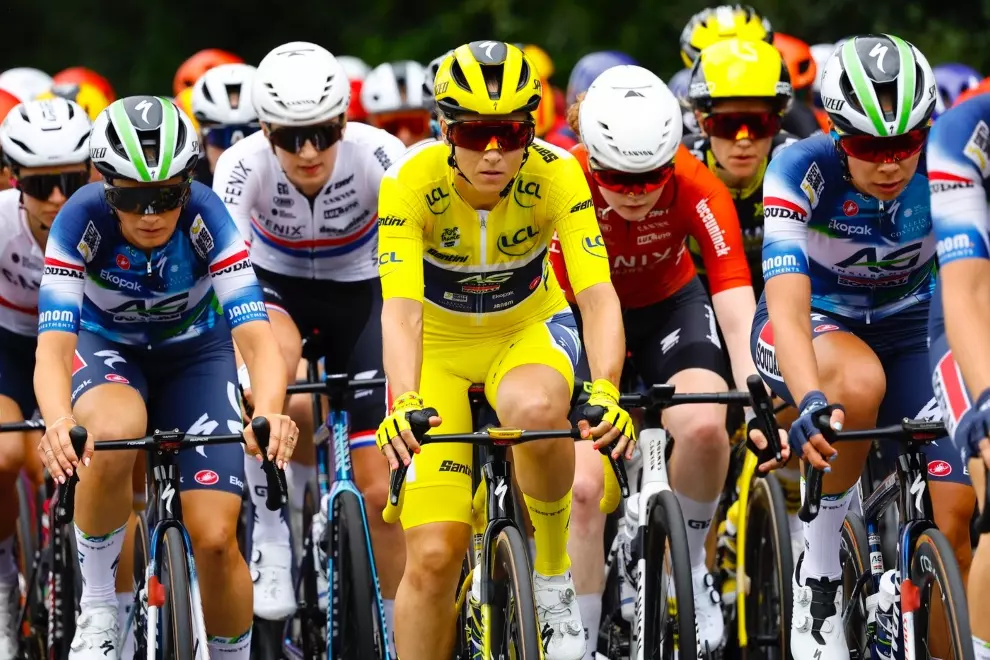Mont Ventoux, France

This is a no-brainer choice, thanks to both the climb’s Tour de France history and stunning difficulty level. Nicknamed the “Beast of Provence”, Mont Ventoux is looming over the Vaucluse region at 1912 metres. Its other name, the “Bald Mountain” refers to the limestone moonscape-like scree slopes with no trees and vegetation, which expose you to the unforgiving sun and heat all day long. This climb is best approached with a mix of proper preparation and awe as it’s extreme conditions can have grim consequences – this is where Tommy Simpson, one of UK’s top cyclists, collapsed and died within metres of finish in 1967 and where Eddy Merckx needed an oxygen mask after winning the stage in the 1970 Tour de France. Especially in summer, the barren white stones reflect heat accompanied by the infamous Mistral winds – a combination that will make you feel like cycling in a hairdryer.
Height: 1912 m
Elevation: 1639 m
Average gradient: 7.6 %
Length of ascent: 21.4 km
Monte Zoncolan, Italy
If you’re looking for a slow and mellow afternoon ride… turn your back on this one. Found in the Carnic Alps, it’s one of the hardest climbs in professional road racing and the organizers of the Giro d’Italia have used it six times so far – and were even thinking of using it twice in a single race in 2014. Luckily for the riders, the idea got dropped. To keep a suffering rider company, there are panels with Giro d’Italia heroes installed each 500 m. If we put Monte Zoncolan in more numbers, the last eight kilometres average 15 % with the highest pitch at fearsome 22 %. If this doesn’t convince you of the climb’s savageness, maybe the description by Gilberto Simoni who conquered it twice will do the trick: “It’s like a slow execution; the easiest part of the Zoncolan is harder than the most difficult at the Tour.”
Height: 1750 m
Elevation: 1210 m
Average gradient: 11.5 %
Length of ascent: 10.5 km

Pico de Veleta, Spain
Located in the Sierra Nevada range in Andalucia, the mountain is the third highest peak in Spain and also the highest paved road in Europe. It might sound like Tourmalet’s and Ventoux’s less famous cousin but they both pale in comparison with Pico de Veleta’s length and difficulty – the total altitude you reach during the climb is 2700 m, in other words, twice the ascent of the Col du Tourmalet. If you manage to ignore all the pain, occasional snow, a burning sensation in your lungs, and the thinning oxygen, you’ll be rewarded with an amazing experience and views, including that of the city of Granada.
Height: 3395 m
Elevation: 2700 m
Average gradient: 6.5 %
Length of ascent: 43 (!) km
Col du Galibier, France
When included in the Tour de France, the Col du Galibier always bears a promise of a proper spectacle. Unlike most passes, this one doesn’t start in a wooded area that slowly gets thinner but throws you on stones and boulders straight away. The spectacular view when you reach the 2000m elevation mark is also accompanied with a spectacular illusion – while the pass appears to be right in front of you, there’s actually another 7.5 km to go and from this point onward, the road snakes up in hairpin bends all the way to the summit.
Height: 2645 m
Elevation: 1220 m
Average gradient: 7 %
Length of ascent: 17.5 km
Col du Tourmalet, France

Without exaggeration, we could assign the Col du Tourmalet a mythical status as it made its debut in the 1910 Tour de France and was since featured in the race for 83 times. Immediately after its first inclusion in the Tour, it was dubbed the “Circle of Death” and we can’t but feel sympathy for the poor riders who only had two gears and solid steel-frame bikes. As a personal testament to the hardships of the highest pass of the French Pyrenees, Octave Lapize, the 1910 Tour winner whose statue can be found near the summit, is famously known for shouting at some race organizers he met while climbing the Tourmalet: “Vous êtes des assassins! Oui, des assassins!” Which, indeed, means: “You are murderers! Yes, murderers!”
Height: 2115 m
Elevation: 1404 m
Average gradient: 7.4 %
Length of ascent: 19 km
Sa Calobra, Spain
Found in the paradise island of Mallorca, La Calobra is actually a fishing village located at the base of the Tramuntana mountain range but the name also rubbed off the 682m climb, because that’s where the ascent starts. Officially named the Col de Val Reis, the nickname La Calobra translates as “The Serpent”, which is extremely fitting, given its 26 hairpin bends and a spiral bridge called the “tie knot”, all running through limestone bedrock. Mallorca’s mild climate is an ideal location for both professional winter training and coffee-racer amateurs and what’s more – the Sa Calobra is extremely picture-worthy.
Height: 982 m
Elevation: 682 m
Average gradient: 7.1 %
Length of ascent: 9.4 km
Passo Gavia, Italy

To best describe the highest mountain pass in the Italian Alps, let’s look at one day the peloton of the Giro 1988 d’Italia rode through it while a snowstorm was raging. By the time the first riders reached the bottom of the last climb, they were nearly frozen and the heavy snow sticking to them made them unrecognizable. Getting to the finish alive became an only goal for most and there were even reports of racers peeing on their fingers to keep them warm. This fateful day was later described as “the day strong men cried” and is still hailed by some cycling aficionados as the toughest day the pro peloton has ever have to endure on a bike. That’s all you need to know about the Passo Gavia.
Height: 2621 m
Elevation: 1363 m
Average gradient: 7.9 %
Length of ascent: 17.3 km




